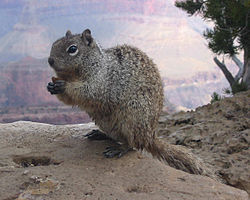| Namdapha flying squirrel | |
|---|---|
 | |
| Holotype of the Namdapha flying squirrel, viewed from above and below | |
| Scientific classification | |
| Kingdom: | Animalia |
| Phylum: | Chordata |
| Class: | Mammalia |
| Order: | Rodentia |
| Family: | Sciuridae |
| Genus: | Biswamoyopterus |
| Species: | B. biswasi |
| Binomial name | |
| Biswamoyopterus biswasi | |
The Namdapha flying squirrel (Biswamoyopterus biswasi) is a flying squirrel endemic to Arunachal Pradesh in northeast India, where it is known from a single zoological specimen collected in Namdapha National Park in 1981.



